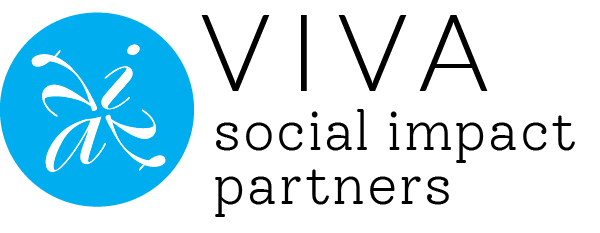3 min read
Data for Impact: How Data Can Help Your Organization Better Understand (and plan for!) the Impact of COVID-19
Laura Bowen
October 2, 2020
Blog

The sudden and unprecedented nature of COVID-19 and its impact on the economy and communities has raised questions across sectors:
Can our company or organization survive with reduced or changed cash flow? How can we re-open, and what will re-opening look like? How can we best use our company or organization’s resources to help?
At VIVA, we have spent much of 2020 partnering with our clients to re-examine and pivot priorities in light of the pandemic. Much of this work has involved collecting and analyzing data to address the questions above, as well as many others. Two such examples of ways that organizations can use data to address COVID-related questions are included below:
1. Use financial modeling to understand the impact to your finances and how to structure your finances moving forward. With the sudden closures caused by COVID-19, many organizations are in a very challenging situation: fixed costs (rent, salaries) remain, while revenue has decreased or stopped entirely.
This was the case for one of our clients, an afterschool child care provider. With lost revenue due to COVID-required closures, as well as class size restrictions and uncertain regulations for re-opening, our client needed to understand their changing revenue and cost structure moving forward, including their ability to cover fixed costs, such as rent. After reviewing their revenues, costs, and expenses—also known as a Profit & Loss statement or P&L—to understand their current situation, we knew it was essential to forecast what future scenarios might look like. To support this effort, VIVA surveyed the families in the program to understand their level of comfort in sending their children back to school and to after school child care, as well as the amount of care (hours and days) that they expected would be needed. These findings provided important assumptions to support revenue forecasting. VIVA also reviewed the provider’s finances, taking into account expected child count and pricing upon re-opening, and developed multiple scenarios for pricing, as well as for rent payment affordability. By developing multiple scenarios based on the known variables, VIVA helped our client determine pricing for re-opening, as well as a floor and ceiling for rent negotiation.
The bottom line: If your organization is struggling to stay afloat during COVID-19, data and information can help! Make sure you fully understand your finances pre- and during COVID, and gather as much insight as you can into how the situation might evolve. From there, financial modeling can help you plan for—and navigate—the changing situation.
2. Use surveys to quantify your community’s needs and provide insight into how to pivot. Many of VIVA’s clients are funders. While these clients may be more financially stable during COVID-19, the pandemic has required sudden shifts in their operations and the operations of the partners they fund, thus raising questions of how to adapt to ensure communities continue to be supported in the right ways.
When the COVID-19 outbreak caused the sudden closure and uncertain re-opening of childcare sites, one of our clients received a >$1M government grant to support child care providers during COVID-19. This client prioritized ensuring that child care program changes and provider supports matched the most urgent needs of providers and families in the county. To better understand what these urgent needs were, VIVA developed a brief survey—distributed in English and Spanish—that collected data from over 200 child care providers and captured the challenges facing those providers, as well as the families they serve. VIVA and our client used the survey insights to facilitate a task force that determined the allocation of the grant money. Using this data, the client was able to keep provider and family needs at the forefront of their work, while moving as quickly as possible to make decisions and distribute funds in the ways that they were needed most.
The bottom line: COVID-19 forced many organizations to pivot, quickly. Now that the initial crisis is over, and organizations and communities are navigating the prolonged pandemic, ensure that you know what your community’s and stakeholders’ needs are. Strategically written surveys are an effective way to gather that critical information, without overburdening those that you want to support.
While we wish we had easy answers to the challenges posed by COVID-19—there aren’t any. However, effectively using data and analytics in targeted ways can help in making at least some of the unknowns known, so that some of the difficult and important decisions during this time can be clearer.
Interested in learning more about how VIVA can support your organization’s efforts? Contact us!
